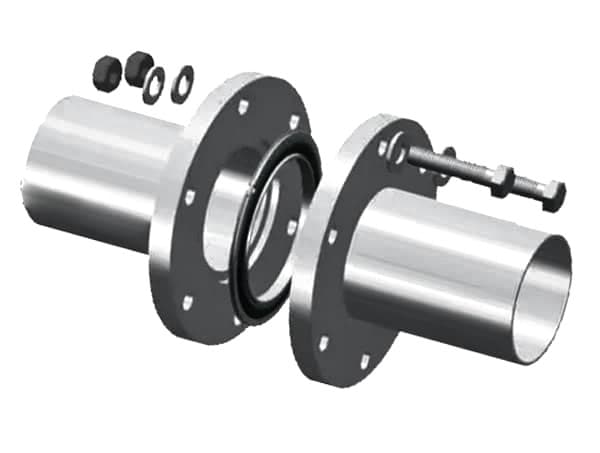Starting with Production to Space: Vacuum Flanges in Various Sectors
In the present day fast-changing industrial landscape, vacuum flanges have risen as essential components throughout a variety of sectors, spanning high-tech production to the study of the cosmos. These seemingly simple devices play a key role in maintaining the stability of vacuum systems, ensuring that environments are managed and optimized for a multitude of applications. As increasingly utilize new technologies, the relevance of vacuum flanges becomes even more clear, allowing processes that necessitate specific conditions.
The adaptability of vacuum flanges allows them to find applications in fields as diverse as chip manufacturing, medical equipment manufacturing, and experimental investigation. Their ability to create sealed seals is essential for processes that depend on managed atmospheres, whether it be the manufacturing of microchips or the careful management of delicate materials. While we delve further into the world of vacuum flanges , it is evident that these components are not just operational necessities; they are essential enablers of technology and development in various industries.
Overview of Vacuum Seals
Vacuum flanges are vital components in the construction of vacuum systems, offering a reliable means to create and maintain a sealed environment. These flanges enable multiple industries to manage processes that demand low-pressure conditions, ensuring that contaminants do not enter vulnerable equipment. The design of vacuum flanges allows for diverse joining methods, such as bolted, welded, or clamped connections, based on the specific application requirements.
Numerous types of vacuum flanges exist, each tailored for distinct vacuum levels and operational environments. Typical types include CF (Conflat) flanges, which utilize a knife-edge design for a metal-to-metal seal, and KF (Klein Flange) flanges, which employ elastomeric seals for more convenient assembly. The choice of flange type is critical, as it influences factors such as leak rate, thermal conductivity, and even the type of materials that can be used within the vacuum system.
In industrial settings, vacuum flanges play diverse applications ranging from semiconductor manufacturing to food processing. The ability to create a controlled vacuum is vital for processes such as thin-film deposition, where materials are applied in ultra-clean conditions. As industries continue to advance, the role of vacuum flanges becomes significantly critical, highlighting the importance of these components in achieving high-efficiency and contamination-free environments.
Uses in Different Sectors
Vacuum flanges are crucial parts in numerous manufacturing applications, providing secure sealing solutions in settings where maintaining a vacuum is critical. In the microchip sector, for instance, vacuum flanges are employed to create regulated atmospheres that are essential for the fabrication of semiconductors. Their ability to withstand high heat and corrosive substances makes them perfect for various applications including etching and CVD, where accuracy and cleanliness are critical.
In the area of pharmaceuticals, vacuum flanges play a crucial role in the manufacturing of clean products. They are utilized in vacuum drying systems and freeze-drying processes, which require the removal of moisture from sensitive compounds without compromising their quality. The reliable sealing characteristics of vacuum flanges ensure that these processes are executed in an airtight environment, thus preventing pollution and ensuring product safety.
The aerospace and military industries also gain advantages from the use of vacuum flanges, particularly in applications such as vacuum environments for testing components and materials. These industries require components that can withstand extreme environments while preserving a reliable vacuum. Vacuum flanges provide the essential support for high-performance systems, enabling the testing of space technology technologies in low-pressure conditions, as well as contributing to advancements in space exploration.
Future Trends in Suction Technology
The outlook of suction technology is poised for significant advancements as sectors continue to explore innovative applications. One major movement is the incorporation of intelligent solutions into vacuum systems. This includes the utilization of Internet of Things devices for immediate monitoring and data analysis, which can enhance efficiency and lower service expenses. Firms are increasingly adopting these solutions to refine their operations and improve energy efficiency.

Another upcoming trend is the creation of new substances for suction flanges and related components. Light, durable materials such as innovative polymers and composites are being researched and developed to enhance the performance of suction mechanisms in various uses. These materials not only provide better resistance to rust and wear but also contribute to lessened unit mass, making them perfect for aircraft and high-tech industries.
Additionally, the emphasis on sustainability is shaping the outlook of vacuum tech. Manufacturers are focusing on eco-friendly practices, from the acquisition of material inputs to the design of energy-efficient solutions. The push for sustainable options is driving innovations in suction uses, leading to greater recycling and minimized waste, ultimately resulting in a more eco-friendly approach across numerous industries.